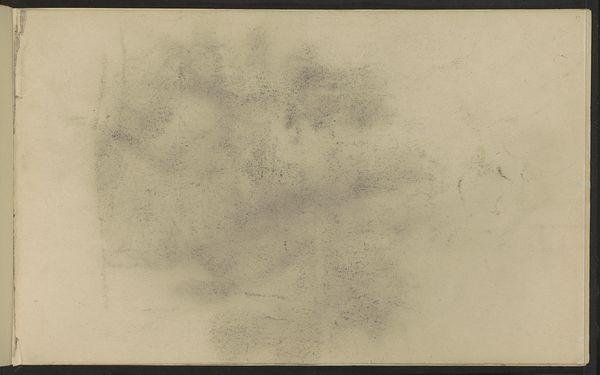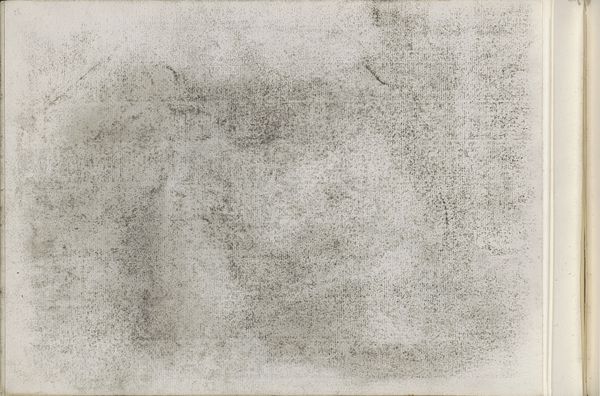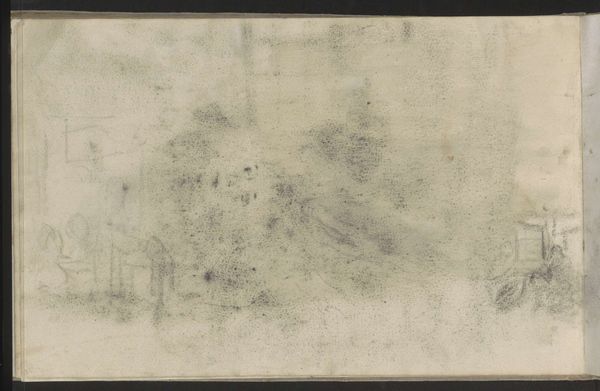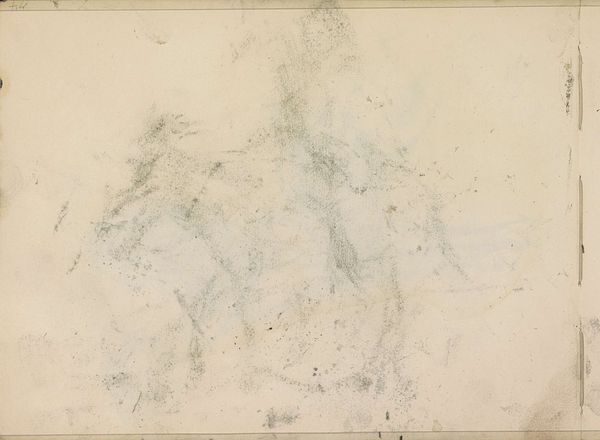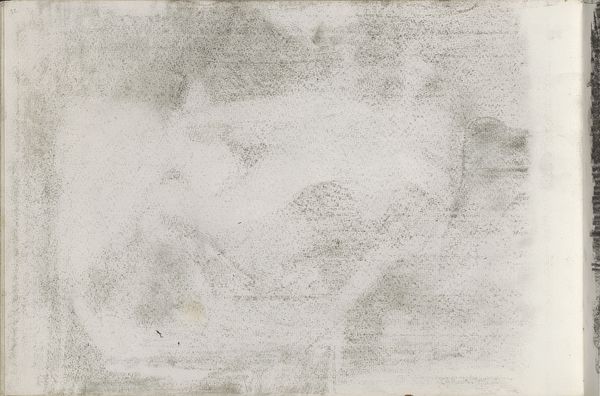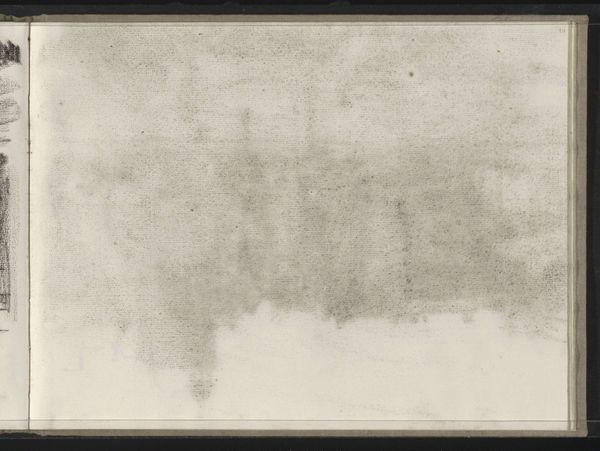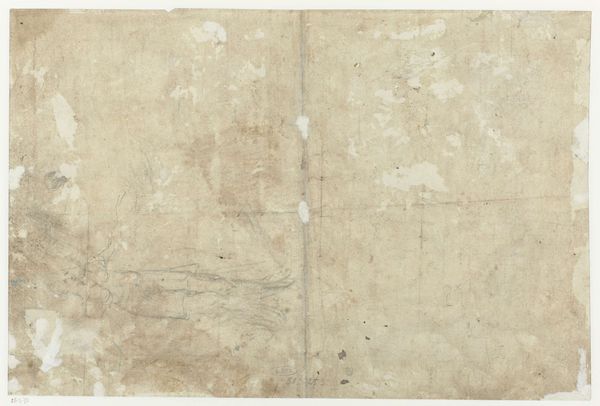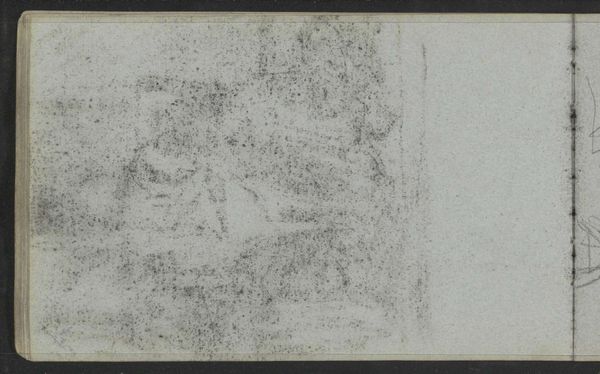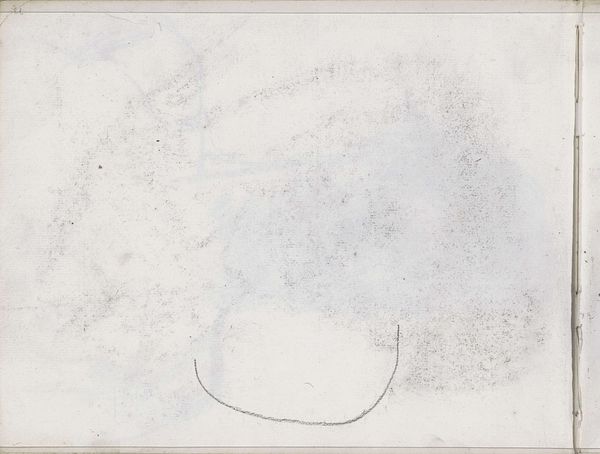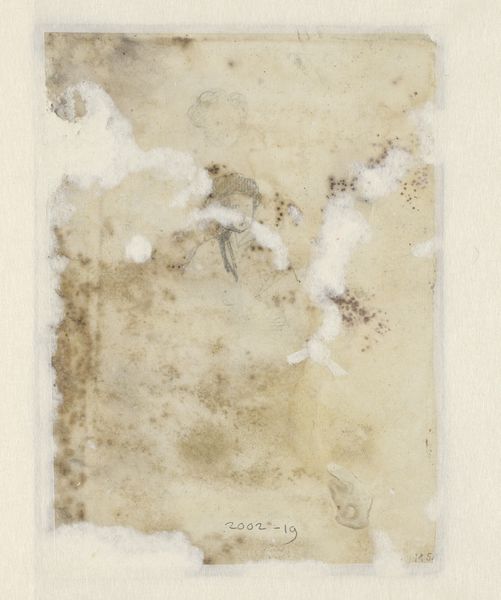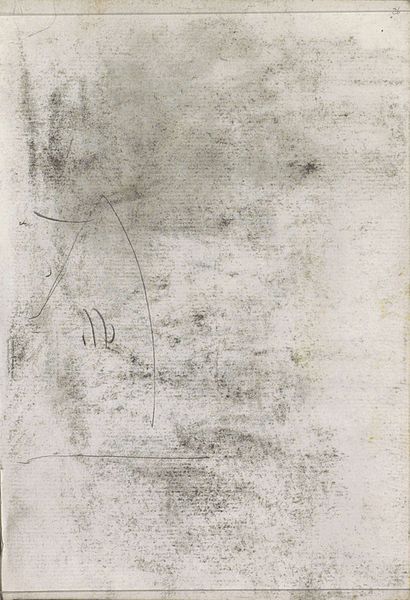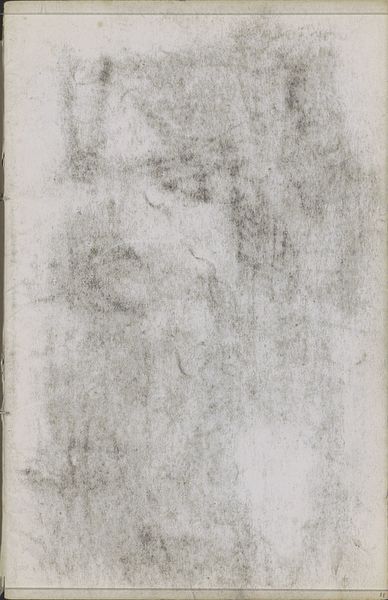
Copyright: Rijks Museum: Open Domain
Curator: Well, hello there. This ghostly image is "Abklatsch van de tekening op blad 12 recto," an intriguing drawing by Isaac Israels, likely created sometime between 1886 and 1934. It's currently held at the Rijksmuseum. Made using graphite and frottage on paper. What leaps out at you? Editor: A fleeting memory. Like dust motes dancing in a sunbeam – elusive and yet undeniably present. It’s a study in impermanence. I’m immediately drawn to its ephemeral quality and lack of a fixed subject. Curator: Impermanence, yes, that's it exactly. It almost feels accidental, a transfer of something that was never meant to be seen this way. Israels uses the 'abklatsch', or transfer technique to pull up, ghost-like, a vague figure in a room or street. I like to imagine him almost as a street artist of his time. He wasn’t concerned with societal rules but trying out something new by portraying everyday people doing everyday activities. Editor: And the "everyday" is key here, isn’t it? These smudges and lines suggest a world in motion, resistant to capture. It’s an anti-monument. Perhaps unintentionally, Israels offers a commentary on whose lives, realities, and experiences are typically considered worthy of documentation. Curator: Interesting, anti-monument...It makes me consider how many layers of reality exist beyond our perception. There's something profoundly honest in its lack of polish, its unfinished quality. You see art pieces celebrated for what is visible; I adore pieces like this for what is unsaid and perhaps lost over time. The viewer brings their emotions to it in a collaborative, even unconscious act. Editor: Exactly. It forces us to confront our own projections and assumptions, especially as the image alludes to the social stratification present at the turn of the 20th century when art moved outdoors to meet society where it lived. Who had the time for leisurely sketching, and who was relegated to existing only as blurred figures in the background? Israels doesn’t seem interested in fully resolving those contradictions here; instead, the artist just observes these people who otherwise may go unseen. Curator: And perhaps the unresolved is where the beauty lies... By choosing such a delicate method he offers respect and invites speculation in place of bold claims and judgments. Editor: Precisely, and perhaps we should let that delicacy guide our own understanding, too, always reminding ourselves that a true picture contains not just forms but a vast field of unseen relations. Curator: Beautiful. It seems Israels is gently pushing us all to reconsider perspective both in the work, and in the world at large.
Comments
No comments
Be the first to comment and join the conversation on the ultimate creative platform.
